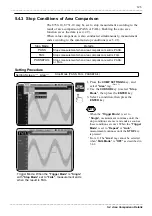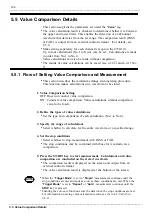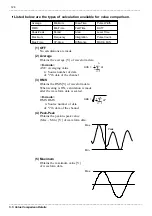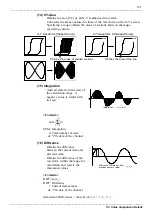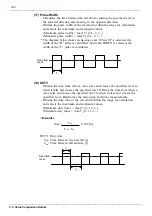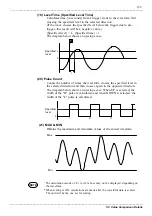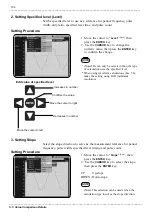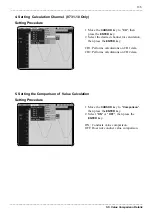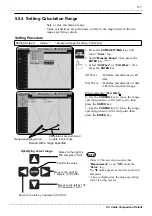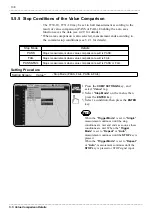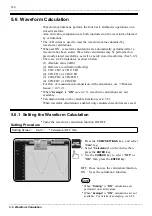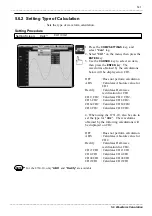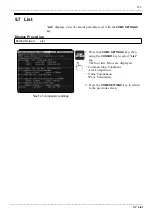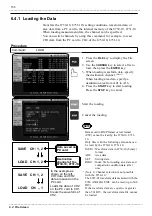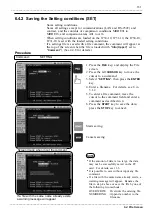
136
_____________________________________________________________________________________________
5.5 Value Comparison Details
______________________________________________________________________________________________
FAIL Comparison
PASS Comparison
FAIL Comparison
Upper limit
Lower limit
Setting of the Upper limit
Setting of the Lower limit
0 0 0 . 0 0 0 0
A
B
A
B
B
Increases in
number
Move the cursor to
right
Decreases in
number
Setting of the Upper limit / Lower limit
Move the cursor to left
Confirms the value
NOTE
6. Setting of the Upper limit and Lower limit
Checks whether the value calculation result is within the upper and lower
limits.
Setting Procedure
1. Move the
CURSOR
key to "
Upper
", then press the
ENTER
key.
2
.
Use the
CURSOR
key to change the value, then
press the
ENTER
key to confirm the change.
3. Move the
CURSOR
key to "
Lower
", then press
the
ENTER
key.
4. Use the
CURSOR
key to change the value, then
press the
ENTER
key to confirm the change.
The input fields for the upper limit and lower limit are
both nine digits (excluding the decimal point), as
shown in the figure below. Sign and prefix can be
entered in digits A and B.
A: Displays a blank, -, or *. A blank indicates a
positive value; a - indicates a negative value. The *
indicates "don't care" and the setting is ignored. For
example, to output FAIL only when voltage exceeds
3V, set the upper limit to 3 and enter * for the lower
limit. Only the upper limit is used for value
comparison. Enter * and press the
ENTER
key. The
setting will be displayed as [*000.000].
B: Displays a blank or SI prefix. For details of SI
prefix, see 13.2.5.
Setting "
Scaling
" (see 4.3.8) "
ON
" displays the scaled
values.




